As a web developer, you might not be the final user of your products. However, this doesn’t mean that your job is any less important than that of a content creator or a marketer. In fact, in today’s digital world, having a capable and talented web developer as part of your team can go a long way towards strengthening your organization’s presence online. This is why it’s so crucial for you to understand exactly what a resume for a web developer should look like and what information it should contain. If you’re looking to work as an entry-level or junior-level web developer, these tips will help you land that interview with the perfect company. After all, we all know that what stands out the most on any resume are its strengths. With this blog post, you will have all the insider knowledge needed to ensure yours has them in spades!
Web Developer Resume Example
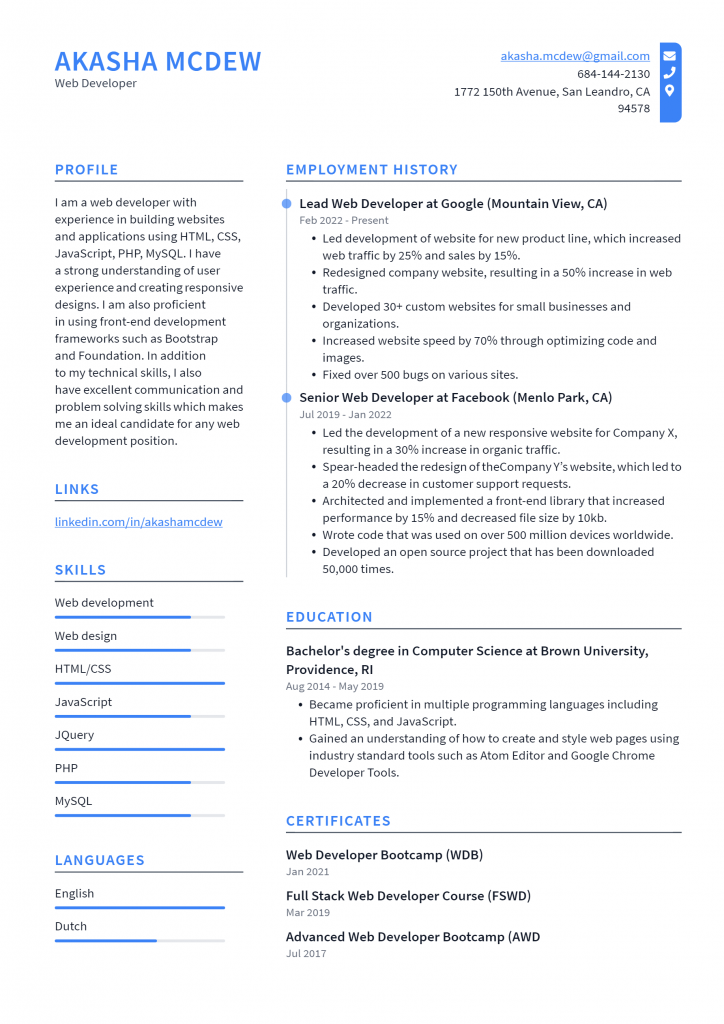
Download This Web Developer Resume as PDF
Mobile Developer Resume Example
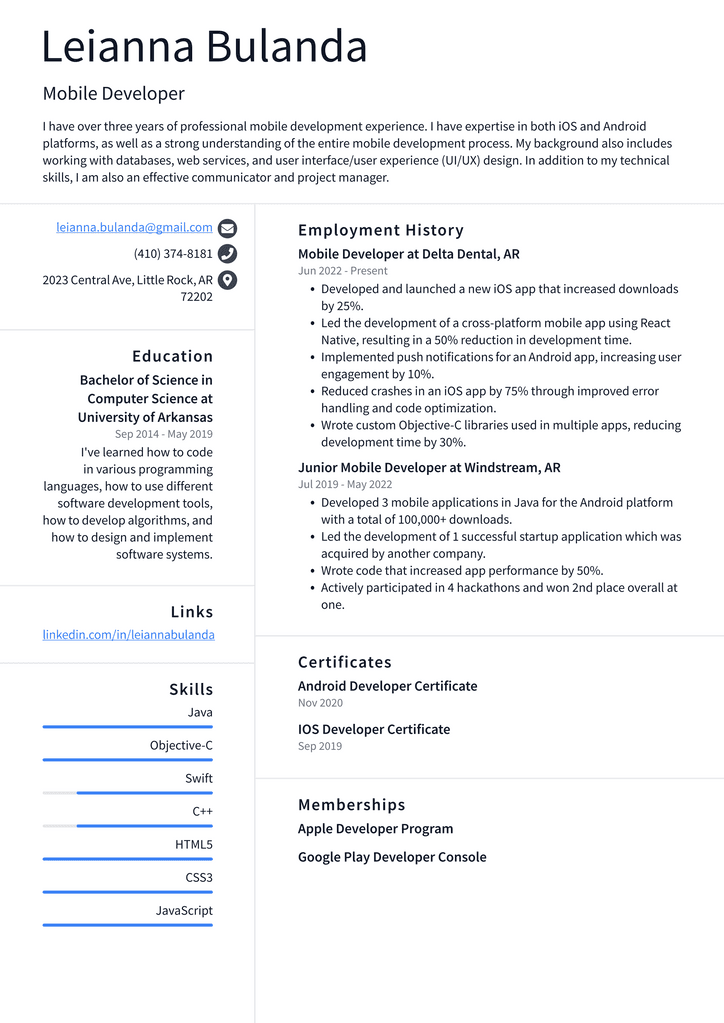
Download This Mobile Developer Resume as PDF
Back End Developer Resume Example
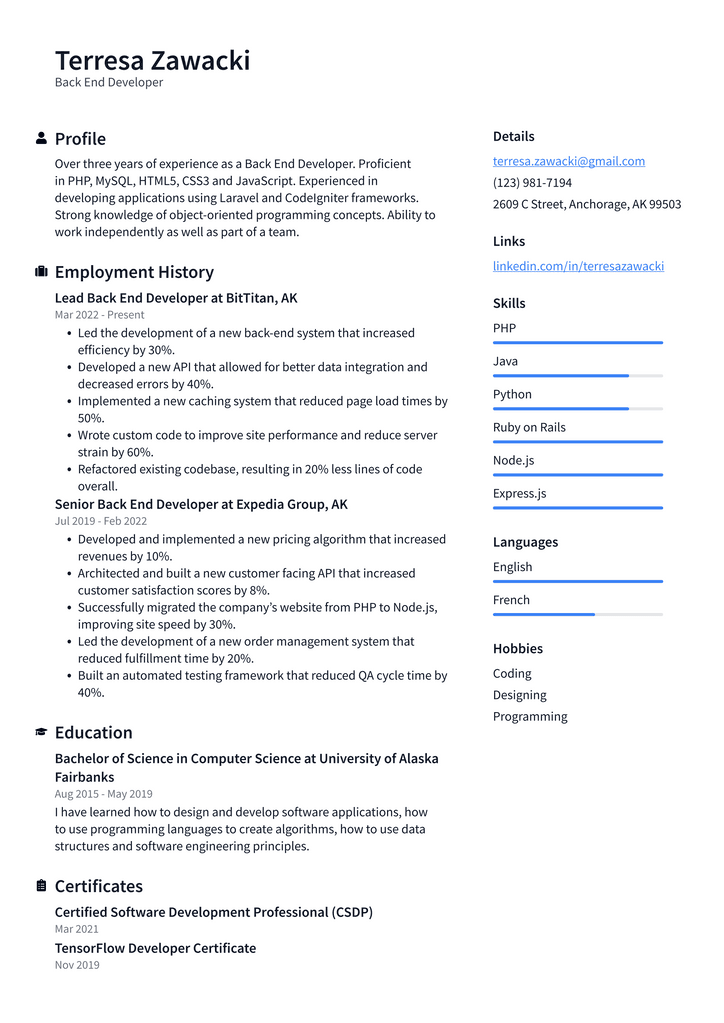
Download This Back End Developer Resume as PDF
UI/UX Developer Resume Example
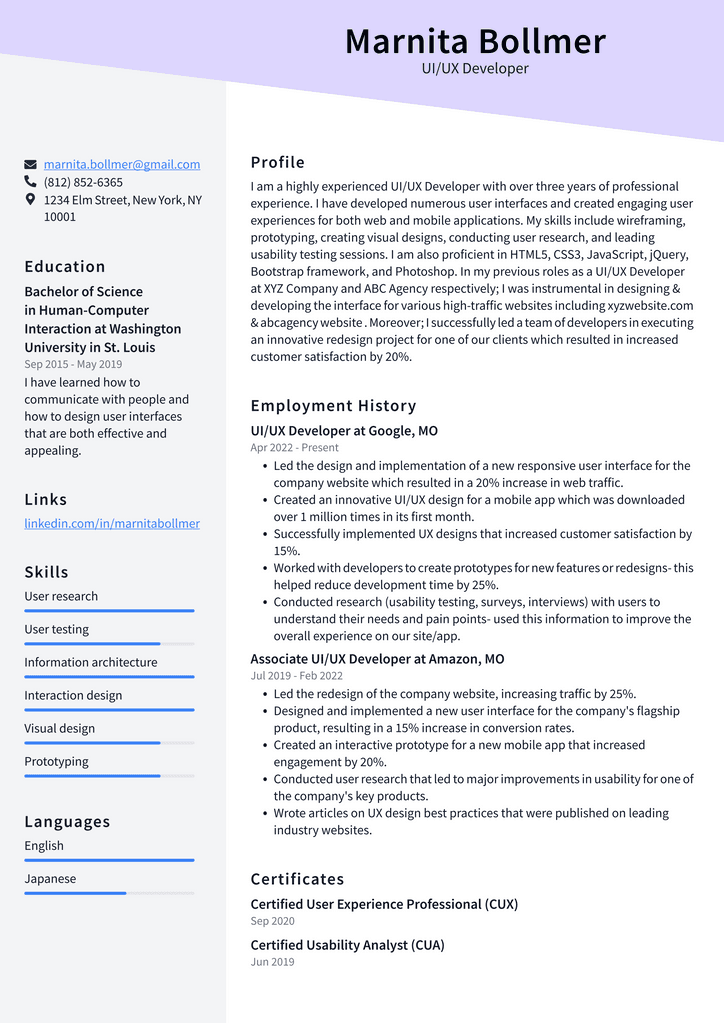
Download This UI/UX Developer Resume as PDF
Front End Developer Resume Example
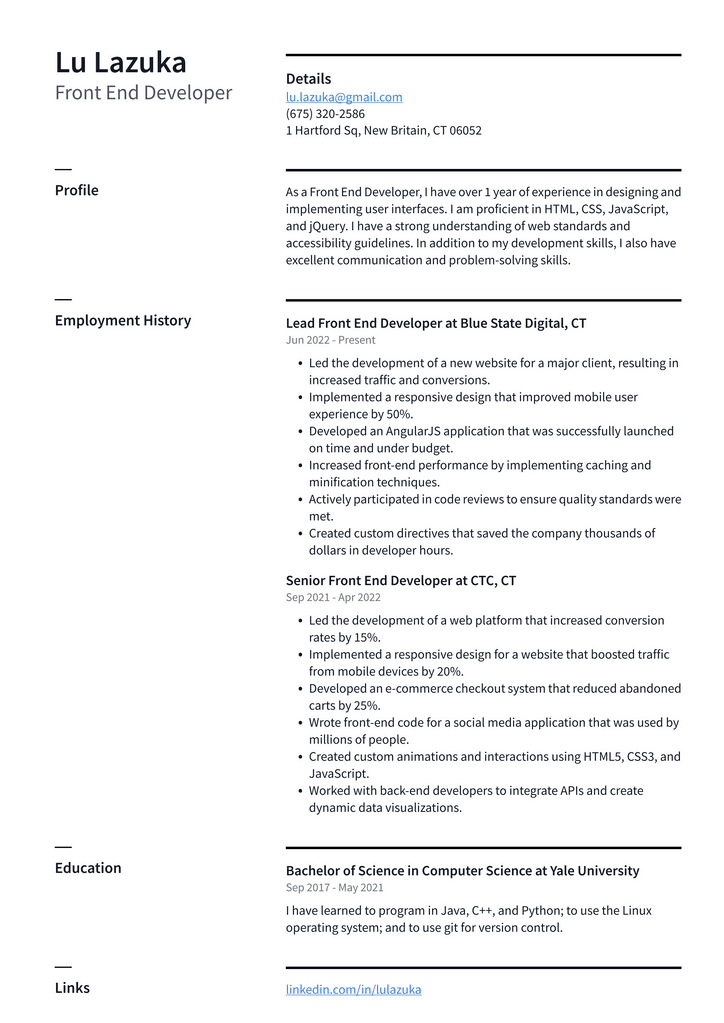
Download This Front End Developer Resume as PDF
Full Stack Developer Resume Example
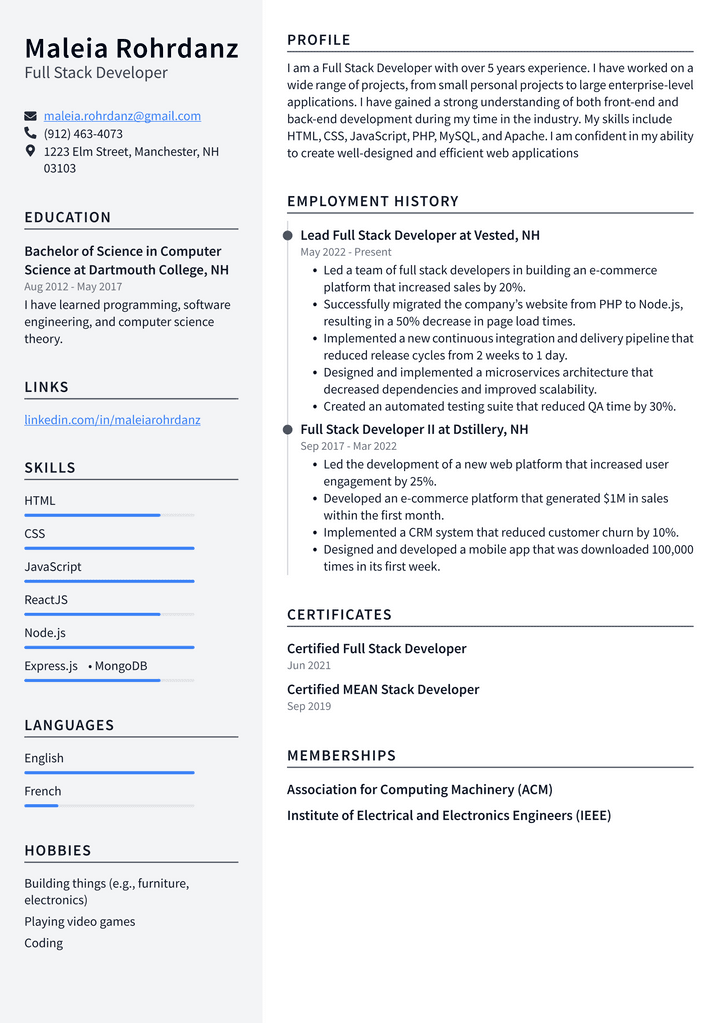
Download This Full Stack Developer Resume as PDF
Game Developer Resume Example
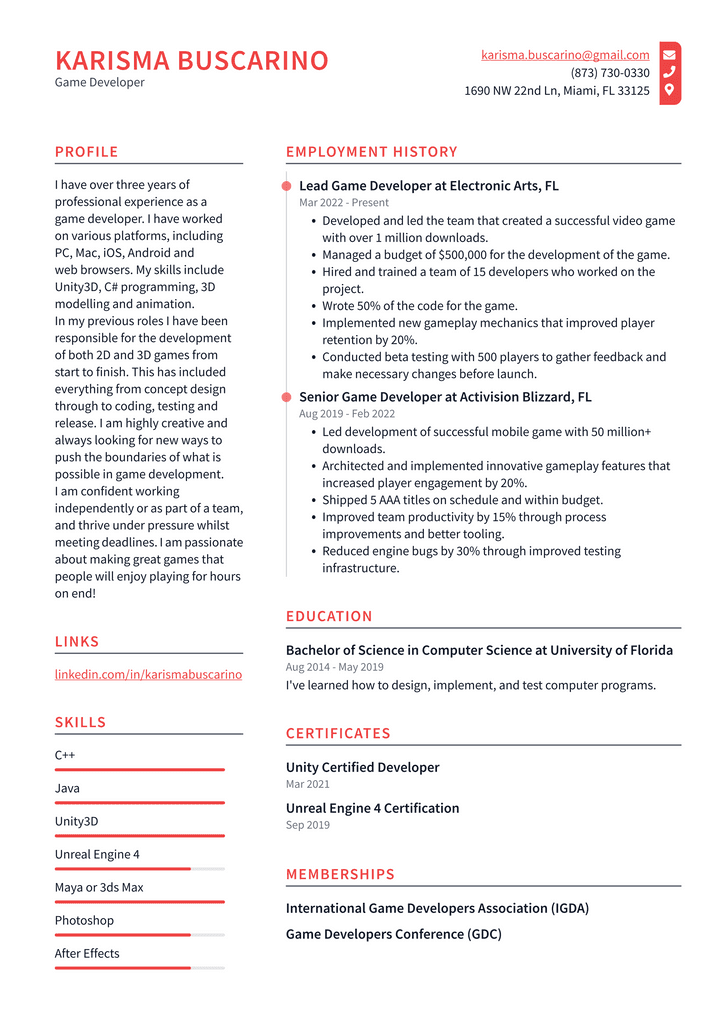
Download This Game Developer Resume as PDF
A Quick Guide to Writing the Perfect Web Developer Resume
– When writing your resume, keep the reader in mind. Be sure to use a professional and formal font, and don’t try to fit too much on one page. – You can get creative with your resume, but it’s always best to keep the focus on your skills. Avoid using bizarre fonts and colors, as this can distract from your work history and accomplishments. – Make sure to use plenty of white space and include a section at the end for your references. – For those just starting in the field, keep your resume focused on your current skills and education. You can expand on your past experiences and include detailed descriptions once you have a few years’ worths of work experience. – It’s always a good idea to have a couple of different resume templates. This way, you have a backup plan if you ever need to quickly update your resume and don’t have time to write a new one from scratch.
Summary of Important Points
– As a web developer, your resume is your ticket to a job interview. If you want to get the job, you need a kickass resume. – A great resume has three essential qualities: it’s specific, it’s concise, and it’s compelling. – Your resume should have three main sections: your work history, education, and skills. – Every resume should also include a references section at the end. – Resumes should be two pages long. Anything longer is a red flag that you can’t edit your work down. Anything shorter isn’t enough to give hiring managers the information they need to decide. – Most hiring managers skim resumes for about 10 seconds. So make sure your resume is easy to read and understand.
Sum up your skills at the top
– The top part of your resume is called the “header” or the “headline.” It’s how hiring managers will first see your resume. – Include your name, address, email address, and phone number at the top right of your resume. – Make sure your headings are bold, clear, and easy to read. The hiring managers won’t spend a lot of time reading your resume. They’ll just be skimming it, looking for essential facts. – The first line after your headings is usually your “Summary of Qualifications.” This is where you can sum up your skills and qualifications. – It’s best to have one or two sentences in this section. It’s not an opportunity for you to write an entire paragraph about yourself.
Make sure your resume includes your coding certifications
– If you have any coding certifications, list them on your resume. – Showing that you have the knowledge and skills to do the job is essential, but so is showing that you have the desire and drive to stay on top of your game. – If you have certifications, you have documentation that you know what you’re talking about. Employers like to see documentation because it proves you know what you’re doing. – If you have a coding certification, include the organization that gave it to you, the date you received it, and the certification type. If you have more than one, list them all. – If you also have a degree, list the degree first. Then list the certification underneath it.
List any technical skills you have, no matter how small
– If you have skills that aren’t directly related to development, include them on your resume. – The hiring manager reading your resume can’t read your mind. If they’re skimming and see something they don’t understand, they’ll skip over it. – If your resume includes only technical skills, hiring managers might think you’re only qualified for a developer job. If you have other transferrable skills, list them on your resume. – If you’re a designer but know how to code, include your design and coding skills in your resume.
Include both programming languages and tools in your skills section
– Employers want to know that you have a wide range of skills. – If you’ve used specific tools on projects that are relevant to your field and the company’s projects, make sure to list them on your resume. – Remember that hiring managers want to know that you’re well-rounded and can jump into any situation and come out on top. – If you’ve used specific programming languages in the past, list them. This includes languages you’ve used in school as well as languages you’ve used in internships and side projects.
Don’t forget your transferrable skills!
– If you’ve learned valuable skills or gained any experience that isn’t directly related to web development, don’t just leave it off your resume. – Transferrable skills are the skills that apply to more than one field. For example, if you’ve worked as a cashier or customer service representative, that’s a transferable skill that can be applied to many different industries. – Make sure to list your transferrable skills at the end of your resume. – If you have transferrable skills, you have the edge over other applicants. They’ll have to work extra hard to prove they’re as well-rounded as you.
Conclusion
Your resume is the most essential tool to get your foot in the door for a new job. Make sure it’s perfect before you send it out! With all the information above, you now have everything you need to create the ideal resume for a web developer. Remember, it’s not enough to list your skills and qualifications. You also need to make sure hiring managers can see them! It’s also important to remember that you can always tweak your resume as you gain experience and learn new skills. So don’t get too bogged down trying to make your resume perfect immediately. With time, you’ll be able to add even more impressive things!